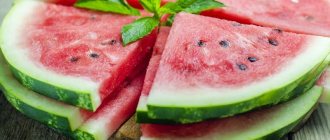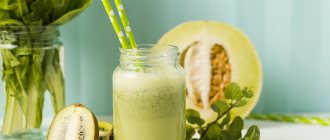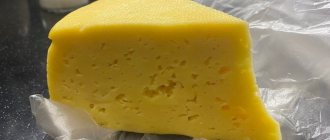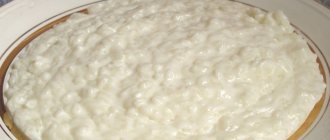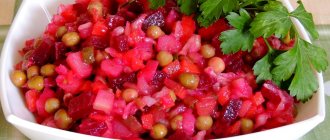Rusks serve as an addition to tea, salads, soups and main courses. The snack has ancient roots. Drying bread began during the first sea voyages and military campaigns. Storage did not change the taste of crackers, ensuring popularity.
Crackers were divided into:
- ordinary;
- officers.
The difference was that the highest grade flour was used in the production of officer's crackers.
The snack is still popular today. New types of crackers are appearing on store shelves. Fans experiment at home by browning bread cut into slices in the oven with the addition of spices.
Is it possible?
You can eat solid foods, but you should not forget about moderation. In addition, the products should not contain flavoring additives that corrode the stomach and cause pain.
Will be useful:
- Sweet crackers, which are best combined with milk, tea, sour cream.
- Salty homemade products without flavoring additives.
- Dried bread, which should be consumed with milk, tea, soup.
If there are additionally no ulcers or polyps, then crackers are not contraindicated for gastritis. These products will not cause irritation to the mucous membranes. But products can scratch the stomach if consumed in large quantities and without drinks or other food. It is advisable to eat them with tea, milk, honey. For peptic ulcers and polyps, such food is prohibited.
Is it possible to eat crackers for chronic gastritis? In this case, the product can be consumed no more than 3-4 times a day. Excessive amounts may cause pain, burning, and nausea. Such symptoms cause ulcers and gastrointestinal disorders.
Rules of use
You are allowed to consume up to 200 g of dry bakery products daily. A prerequisite is to drink or dip crackers into drinks (liquid dishes). Hard crumbs can damage the sensitive gastrointestinal mucosa, weakened by chronic inflammation.
Doctors recommend combining dried bread pieces with the following types of foods and drinks:
- milk, fermented baked milk (for hypoacid inflammation - kefir);
- sour cream 15% fat, natural yogurt;
- beef or chicken broth;
- black and green tea;
- compote of fresh berries, fruits (dried fruits);
- decoctions of medicinal herbs (St. John's wort, yarrow, sage).
In the latent phase of the disease, wheat croutons are supplemented with jam or honey.
Benefits for gastritis
Solid foods do not harm the stomach if they are consumed in moderation and without the addition of salty, spicy ingredients. It is with their help that digestion works normally, and inflammation gradually goes away.
The product is useful and therefore recommended for use due to the following properties:
- Eliminate inflammation and restore digestion, which was disturbed by gastritis.
- There are components and microelements that relieve inflammation and allow the stomach to work better.
- The products are quickly digested, which has a positive effect on digestion.
Is it possible to eat crackers if you have gastritis? Will they be beneficial or harmful? The doctor can provide answers to these questions after the person has been examined. Typically these products are not contraindicated.
What to eat with?
In case of inflammation, gastroenterologists do not prohibit the use of solid products with other foods. Crackers for gastritis are allowed to be eaten with several products:
- Milk, sour cream, cheese, kefir, yogurt (low acidity, and no ulcers).
- Juice, compote, tea (best based on chamomile, St. John's wort, sage).
- Raspberry, cherry, apricot, apple jam (if the acidity is low and there is no pain).
- Broth, soup, gravy, boiled meat.
- Pasta, spaghetti, noodles, but only without seasonings and spices.
And if the disease is in the initial stage, is it possible to eat crackers with gastritis? In this case, the effect on the stomach is great, so products with poppy seeds, raisins, and honey are allowed. You just need to use everything in moderation.
But to prevent pain and other ailments from appearing, you need to be careful about your diet. If a person’s health is important, then it is advisable not to consume crackers with different flavors and fillings. You should not eat salty foods that contain chemical flavoring additives, as they corrode the gastric mucosa and can affect the appearance of ulcers and polyps, which disrupts digestion.
Crackers and gastritis
https://youtu.be/oqf-gXmukJA
Crackers are a common product on the diet table. People suffering from gastritis love them and consume them often. But not always wisely: gastritis and gastritis are different, it manifests itself in several specific forms. Yes, there are different types of crackers, their modern assortment is diverse. The main difference between dried bread and fresh bread is the changed microstructure, which facilitates quick and easy digestion.
And second-baked wheat or rye slices, like a kind of canned bread, retain the entire range of useful substances. These two factors speak in favor of eating crackers for gastritis, which become an important source of vitamins B, E, A, PP, H during the period of treatment, as well as valuable minerals - iron, potassium, magnesium, iodine; essential amino acids – lysine, methionine.
The crackers contain enough carbohydrates to provide the body weakened by illness with the necessary energy. And the presence of fiber in the composition benefits the functioning of the intestines without unpleasant flatulence. But eating crackers for gastritis also has its pitfalls. First of all, this applies to rye products.
Slices of rye bread that have undergone secondary processing are lower in calories than wheat ones. This advantage was appreciated by overweight people. But those who have been diagnosed with diseases of the digestive organs, including gastritis, ulcers, should avoid rye crackers in favor of unleavened rye-wheat crackers or white flour crackers. With some reservation: gastritis with low acidity excludes rye and wheat products.
The daily norm for gastritis is 200 grams of crackers per day, which it is advisable to wash down with something
Toast is also suitable for eating with gastritis - a dried slice is much healthier than a fresh one. The toaster also has opponents who promote the main myth about the dangers of such crackers: they say that the heating from the device irradiates the bread with harmful radioactive particles. Today, this myth has been debunked by scientists, and a toaster can become a very useful assistant for patients with gastritis.
The daily norm for gastritis is 200 grams of crackers per day, which it is advisable to wash down or soak in broth, milk, compote, drinking yoghurt. This reduces the irritant effect on the mucous membrane from crumbs. If you have gastritis against the background of high acidity, you should not eat products with poppy seeds, raisins, nuts and crackers from bread such as “8 grains”, “Rizhsky”, etc.
Some categories of these products should be completely abandoned: oil-rich crackers, salty products, “smoky” crackers. Such products can ruin even the healthiest stomach.
Breadcrumbs occupy a special place in the diet for gastritis. But when purchasing this product, you need to carefully study the composition: excessive chemical additives can cause significant harm. Therefore, it is better to prepare them yourself - grind ordinary crackers in any convenient grinder - blender, meat grinder, coffee grinder.
Thus, for gastritis, the most preferable option is crackers made from unleavened wheat bread. Patients with any type of this disease can afford them. It is ideal if the slices of bread are dried on their own. This approach makes it possible to control the quality of the original bread product and allows you to select the bread for crackers that best suits your personal dietary needs.
What should you not eat crackers with?
Although crackers are useful for gastritis, they still have contraindications. Products should not be used:
- For dangerous illnesses - ulcers, polyps, oncology.
- When adding chemical additives, nitrates.
- Along with coffee, alcohol.
- With sour dishes and foods (if the acidity is high).
- If severe pain and stomach upset occur - nausea, vomiting, constipation.
Is it possible to eat crackers during an exacerbation of gastritis? In this case, it is useful to use products made from wheat flour. Crackers should not be mixed with harmful foods. This can cause irritation of the mucous membrane, which can develop into serious diseases - ulcers, polyps, oncology. If allergies and other contraindications occur, then it is advisable not to use this product. Regarding nutrition, it is advisable to consult a nutritionist and gastroenterologist. If you follow the advice of experts, you will be able to prevent complications.
Why are products dried?
For a long time, people believed that only old stale bread was dried. But now there are many recipes that use croutons made from fresh baked goods.
Bread and rolls are dried for several reasons:
- If there are a lot of bakery products that can go bad.
- When dried products are needed to prepare broth or soup.
- If you want to prepare a salad that includes cubes of croutons.
- When you need a snack to go with your beer.
- If you want something unusual for tea.
- We've run out of breadcrumbs.
- When you want to complement a dish.
Rusks are used to make homemade kvass. Dried bread is healthier than fresh baked bread. The products are often useful for intestinal disorders because they have a strengthening effect.
Crackers dietary product
Good old crackers can be not only rich, but also simple, consider it dietary. The former are made from first or second grade wheat flour with the addition of sugar and flavoring additives. Such crackers are much higher in calories and contain more fat. But simple ones are prepared from rye, wheat or mixed bread without foreign additives.
Crackers contain a lot of carbohydrates, and their digestion does not overload the stomach, so the body receives a lot of energy, which is why croutons are recommended for gastritis
The benefits of crackers are directly related to the quality of the products included in their composition. If the first grade of wheat flour was used, which went through numerous stages of purification and processing, then the body will be able to extract only its calorie content from such a product, since it is practically devoid of useful substances. Rye flour, especially coarse flour, is much healthier. Its calorie content allows products made from it to play an important role in more than one diet.
When bread products are dried, their microstructure changes, which facilitates the processes of digestion and absorption of nutrients compared to fresh bread. Therefore, crackers are recommended in cases where fresh bread is contraindicated for medical reasons (for example, with gastritis).
Crackers contain a lot of carbohydrates, and their digestion does not overload the stomach, so the body receives a lot of energy. This is the reason that the product is included in the list of desirable ones in case of recovery from gastrointestinal disorders, food poisoning, surgical interventions, and previous diseases. For gastritis, rye crackers are not recommended; it is advisable that they be made from wheat flour.
Due to their ability to be quite easily digested and absorbed in the human body, crackers are classified as dietary products. At the same time, the composition of the product is enriched with the same vitamins and minerals that bread contains. Perhaps this is the main benefit of crackers for human health. Crackers saturate our body not only with vitamins PP, A, B, E and H, the product contains such useful biologically active substances as calcium, magnesium, potassium, iron, iodine and molybdenum.
Cooking in the oven
This recipe is considered a classic. It is this that allows you to quickly and easily make a portion of crackers. To prepare, you will need white bread - 1-2 loaves. It must be cut into 1 cm slices. Each of them must be cut lengthwise into equal parts.
Ready long pieces of bread should be cut into short strips or cubes. The bread should be spread evenly on a dry baking sheet and baked at 140 degrees for about 35 minutes. The baking time can be reduced if the temperature is increased, but then you need to control it so that the products do not burn. This is the principle of cooking. The products can be crushed into crumbs and used as breadcrumbs.
Fresh and stale bread is suitable for cooking; it is only important that there is no mold or unpleasant odor. The product should be cut into small pieces, since large pieces may be soft inside. If the products will be used for preparing first courses, it is advisable to cut the bread into cubes. But when serving croutons with sauce, you need to cut long strips.
Homemade crackers
To prepare crackers you will need:
- unleavened wheat bread;
- vegetable oil;
- salt.
The bread is sliced and placed in a bag with salt and vegetable oil. The tied bag is shaken. Then the contents of the package are laid out on a baking sheet. In an oven preheated to 180 degrees, dry the bread for 10 minutes. Rusks are ready if:
- the crust is golden and hard;
- the inner flesh is soft.
Natural crackers prepared at home can complement the diet and increase the calorie content of dishes.
Nutritionists recommend eating crackers instead of baked goods; due to their low acidity, the product is easier to digest.
Storing dried bread
Homemade crackers should be stored in a dark and cool place - from 0 to +15 degrees. You can place them in any container. If insects were found in a bag or box during storage, then you should not use such a product for food. When dried products are placed next to fresh bread, the shelf life of the products is reduced.
Crackers are better preserved in fabric bags or paper rolls. Dried products with raisins, caraway seeds or sugar cannot be kept for a long time. Rusks without additives can be stored for several months. Homemade products will be much more useful, including in the treatment of gastritis.


